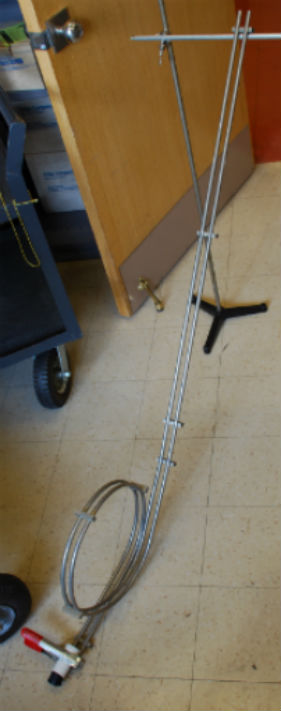
Energy - Loop-the-Loop

Simultaneously demonstrate rotational motion and conservation of energy. Using both ideas in conjunction, you can calculate that you need to start the ball at a height h > 5/2 R and then test this prediction on the track.
The derivation of this is as follows:
Conservation of energy states that the change in potential energy equals the change in kinetic energy, or
mgh = (1/2)mv2.
The acceleration of a rotating object following a circular path of radius R is given by
a = v2/R.
At the very top of the loop, the acceleration must be at least equal to g to counteract the gravitational force. Otherwise, the ball will not make it all the way around the loop and will just fall. Therefore,
a = v2/R > g.
This can be inserted into the first equation to substitute the known parameter R for the unknown v:
mgh < (1/2)mgR,
h < (1/2)R.
This means that, in order for the ball to make it all the way around the loop, it must start at a height at least half a radius above the top of the loop, or 2.5 radii above the ground.